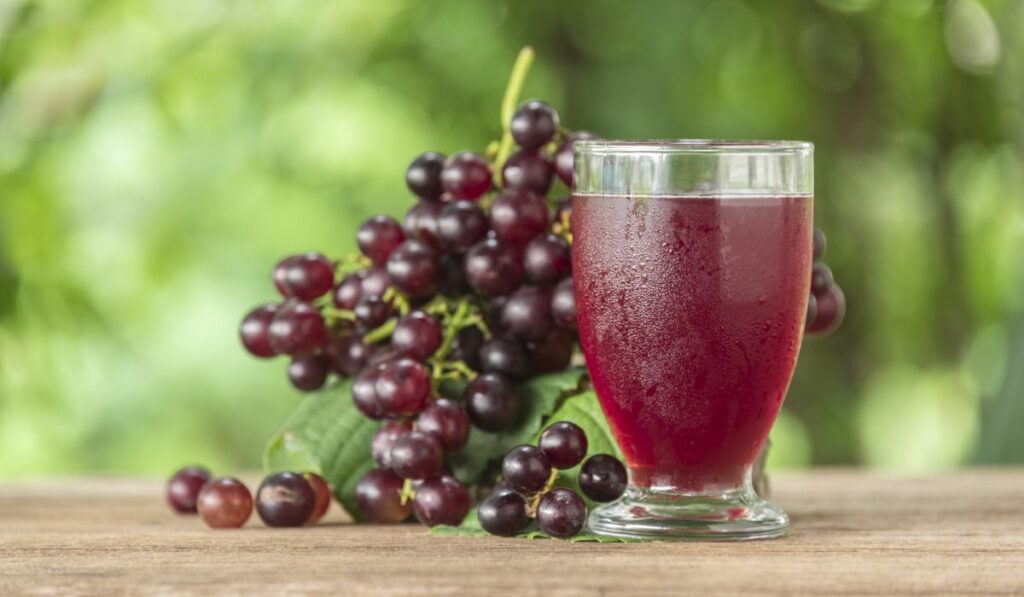Grapes are round, juicy berries that grow in clusters on vines or shrubs. This delicious fruit grows best in temperate regions and is packed with essential nutrients to help boost the immune system. So, when are grapes in season, and how can you pick out the best bunch?
Grapes are in season from May to October, with season peaking around September. To select sweet grapes, all you need to do is check their color and firmness. If the grape’s color looks rich and the flesh feels plump and juicy, the fruit is likely ready to eat. Overripe grapes are great for jams.
Grapes come in different varieties, with some grown for wine production and others for consumption as-is. Some have seeds, while others do not. Let’s take a look at when to find the best grapes, how to tell if they’re ready, and the health benefits you’ll get from enjoying them.
Are Grapes Available All Year?

You can usually find grapes at the grocery store year-round, but the freshest grapes are generally available in late summer. The grape season is long, with fruit harvesting from May to October, but peak production occurs during September.
Grapes thrive in warm weather, and the fruit is best harvested after its spent most of the summer on the vine.
Late summer is when green, red, and black seedless table grapes become widely available. It’s during this period that grapes used in wines are sold.
Of course, fresh grapes aren’t the only way to enjoy this special fruit and its health benefits. Try Welch’s 100% grape juice (on Amazon) for the bold taste of Concord grapes, or spread some Smucker’s Grape Jelly (also on Amazon) on your toast as a special treat.
How Can You Tell if a Grape Is Sweet?
There are a few effective ways to determine if a grape is ready to enjoy, including the following:
Check the Grape’s Color
Color is a good indicator of how delicious grapes are on the inside. When green grapes are yellow-green, they are sweetest and have the best flavor. Black grapes taste best when they have a rich dark color, and red grapes taste best when they are mostly red.
Check the Grape’s Flesh and Stems
Grapes should feel plump, with the flesh firmly attached to the stems. If the grapes look or feel shriveled at the stem, you probably shouldn’t pick them. The reason is that wet or shriveled grapes indicate decay.
When grapes are very fresh, the stems will look green and feel flexible rather than dry and brittle.
Taste the Grape
If you can taste-test a grape from the bunch, pay close attention to the flavors. Grapes are small and acidic when they first develop. Then, sugar moves from the leaves into the fruit as they mature. Furthermore, grapes swell as the water content rises, diluting the fruit’s acid concentration.
Are Grapes Good for You?

Grapes aren’t just delicious — they also come packed with essential nutrients. Let’s look at some of the health benefits of grapes.
Grapes Support the Immune System
Grapes support the immune system thanks to their anti-microbial properties. Vitamins A and C, which are found in grapes, work great for boosting the body’s immunity. Additionally, grapes help with hydration and healthy blood circulation.
Grapes Supply Essential Nutrients
A cup of grapes contains roughly 25% of your daily vitamin C needs, around 20% of your daily vitamin K needs, and at least 10% of your daily copper needs. Vitamin C boosts the production of collagen and serotonin.
Furthermore, vitamin C also improves iron absorption from plant foods, and vitamin K helps with bone formation. Vitamin K deficiency increases the risk of bone fracture.
In addition, the copper in grapes helps produce energy and boosts the formation of collagen and red blood cells. Grapes also contain trace amounts of several other important nutrients, such as potassium, manganese, and vitamin B.
Grapes Provide Valuable Antioxidants
Grapes are packed with antioxidants that reduce inflammation and promote healthy blood flow. These antioxidants have been linked to improved brain function.
Red and black grapes contain quercetin, which is linked to apoptosis — the body’s system for eliminating worn-out cells. Quercetin has also been shown to protect against Alzheimer’s disease.
Furthermore, this healthy fruit also contains anthocyanin and resveratrol, which reduce inflammation. Grapes help prevent chronic inflammation, which could spiral into health problems like heart disease, cancer, diabetes, and arthritis.
Grapes Promote Quality Sleep
Grapes produce melatonin, which helps improve sleep and deal with insomnia. Quality sleep is crucial to overall healthy body function. So, you can add grapes to your dinner to help put you to sleep.
Grapes Improve Eye Health
These delicious fruits contain carotenoids like zeaxanthin and lutein, protecting the retina and eye lens. These carotenoids improve visual range, reduce glare discomfort, and boost visual contrast. In addition, lutein and zeaxanthin reduce the risks of eye disorders like cataracts, macular degeneration, and cataracts.
Grapes Boost Heart Health
Grapes are beneficial to the heart in lots of ways. They lower blood pressure, improve blood circulation, protect against stiffing arteries, and reduce blood clotting and inflammation risks. Research reveals that grapes are high in potassium and fiber, essential minerals that lower cholesterol levels.
Grapes Fight Bacteria
Grapes contain several compounds that protect against harmful bacteria. Resveratrol — a compound found in grapes — has anti-microbial properties that prevent the growth of bacteria.
This compound helps prevent the growth of bacteria like E. coli when added to food. Furthermore, grapes contain anthocyanins, which help combat bacteria. Grapes are high in vitamin C and packed with immune-boosting properties.
